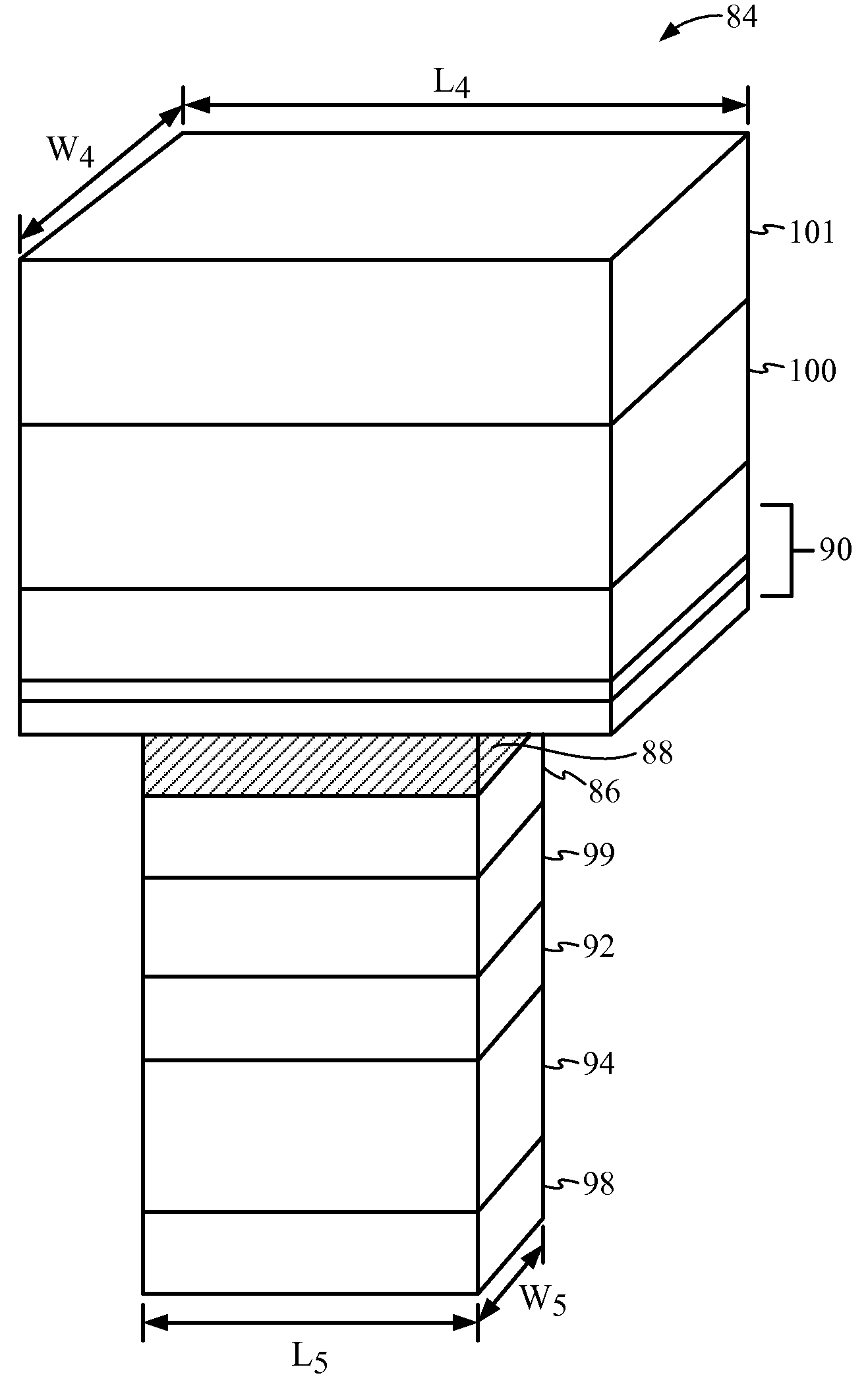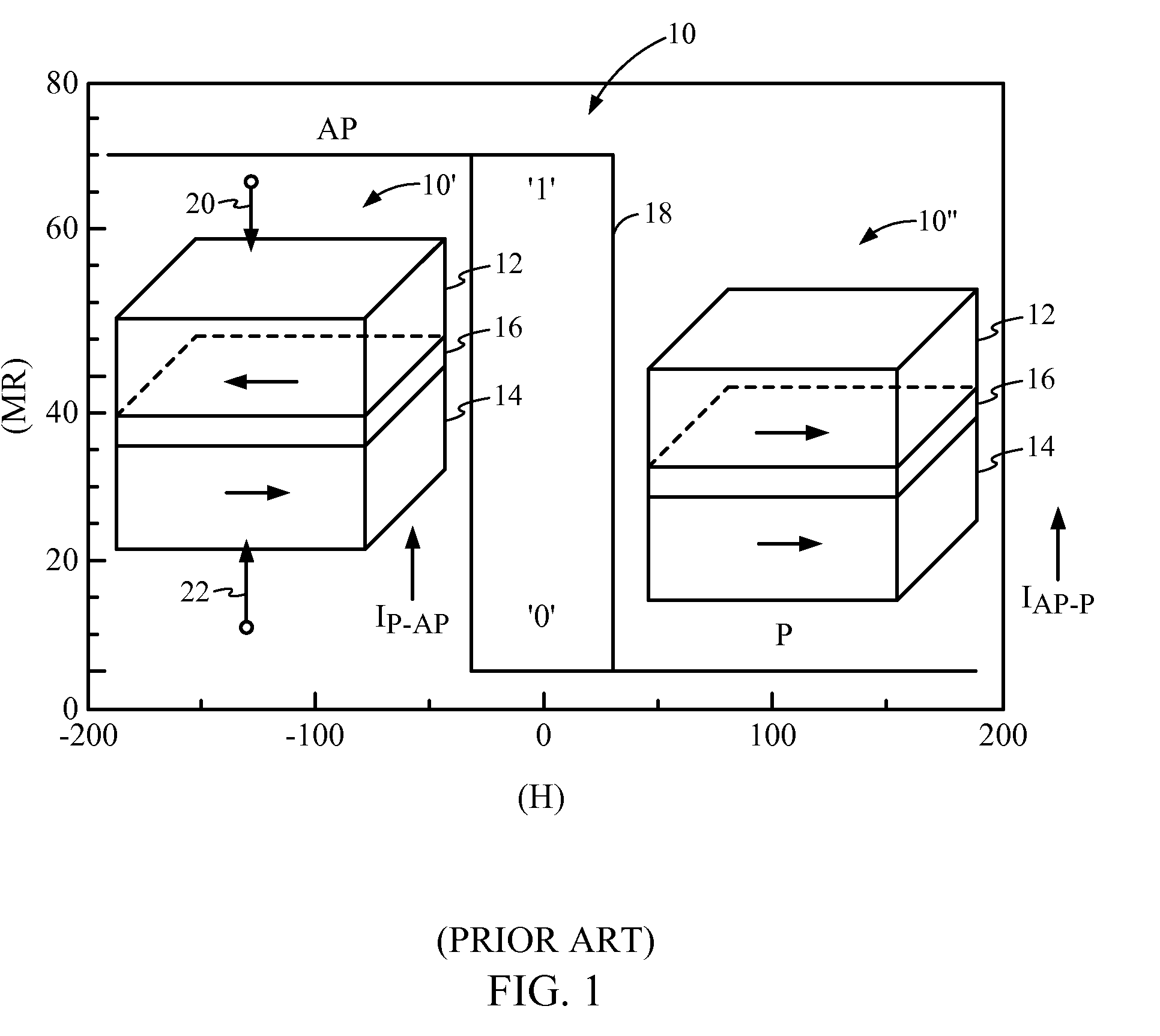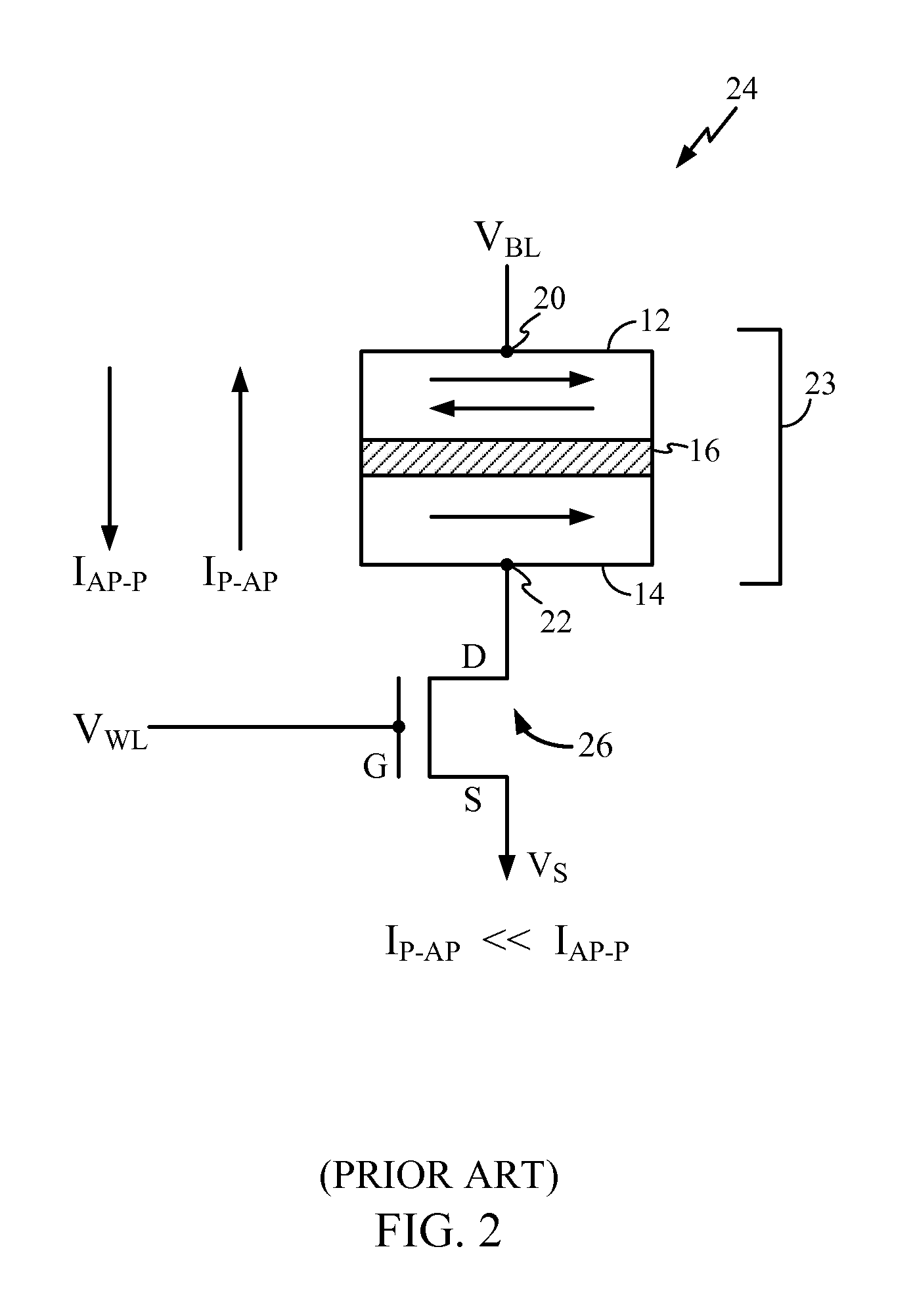Magnetic Tunnel Junction (MTJ) and Methods, and Magnetic Random Access Memory (MRAM) Employing Same
- Summary
- Abstract
- Description
- Claims
- Application Information
AI Technical Summary
Benefits of technology
Problems solved by technology
Method used
Image
Examples
Embodiment Construction
[0023]With reference now to the drawing figures, several exemplary embodiments of the present disclosure are described. The word “exemplary” is used herein to mean “serving as an example, instance, or illustration.” Any embodiment described herein as “exemplary” is not necessarily to be construed as preferred or advantageous over other embodiments.
[0024]Embodiments disclosed in the detailed description include a magnetic tunnel junction (MTJ) and methods of forming same. An MTJ may be employed in a magnetic random access memory (MRAM) bitcell to provide magnetic storage of data. The MRAM bitcell is comprised of an MTJ and an access transistor. The MTJ is comprised of a MTJ layer structure providing tunnel barrier between a first electrode and a second electrode. A free layer is disposed between the second electrode and the tunnel barrier. A reference or pinned layer is disposed between the first electrode and the tunnel barrier. Providing this MRAM bitcell structure couples the drai...
PUM
 Login to View More
Login to View More Abstract
Description
Claims
Application Information
 Login to View More
Login to View More - R&D
- Intellectual Property
- Life Sciences
- Materials
- Tech Scout
- Unparalleled Data Quality
- Higher Quality Content
- 60% Fewer Hallucinations
Browse by: Latest US Patents, China's latest patents, Technical Efficacy Thesaurus, Application Domain, Technology Topic, Popular Technical Reports.
© 2025 PatSnap. All rights reserved.Legal|Privacy policy|Modern Slavery Act Transparency Statement|Sitemap|About US| Contact US: help@patsnap.com



